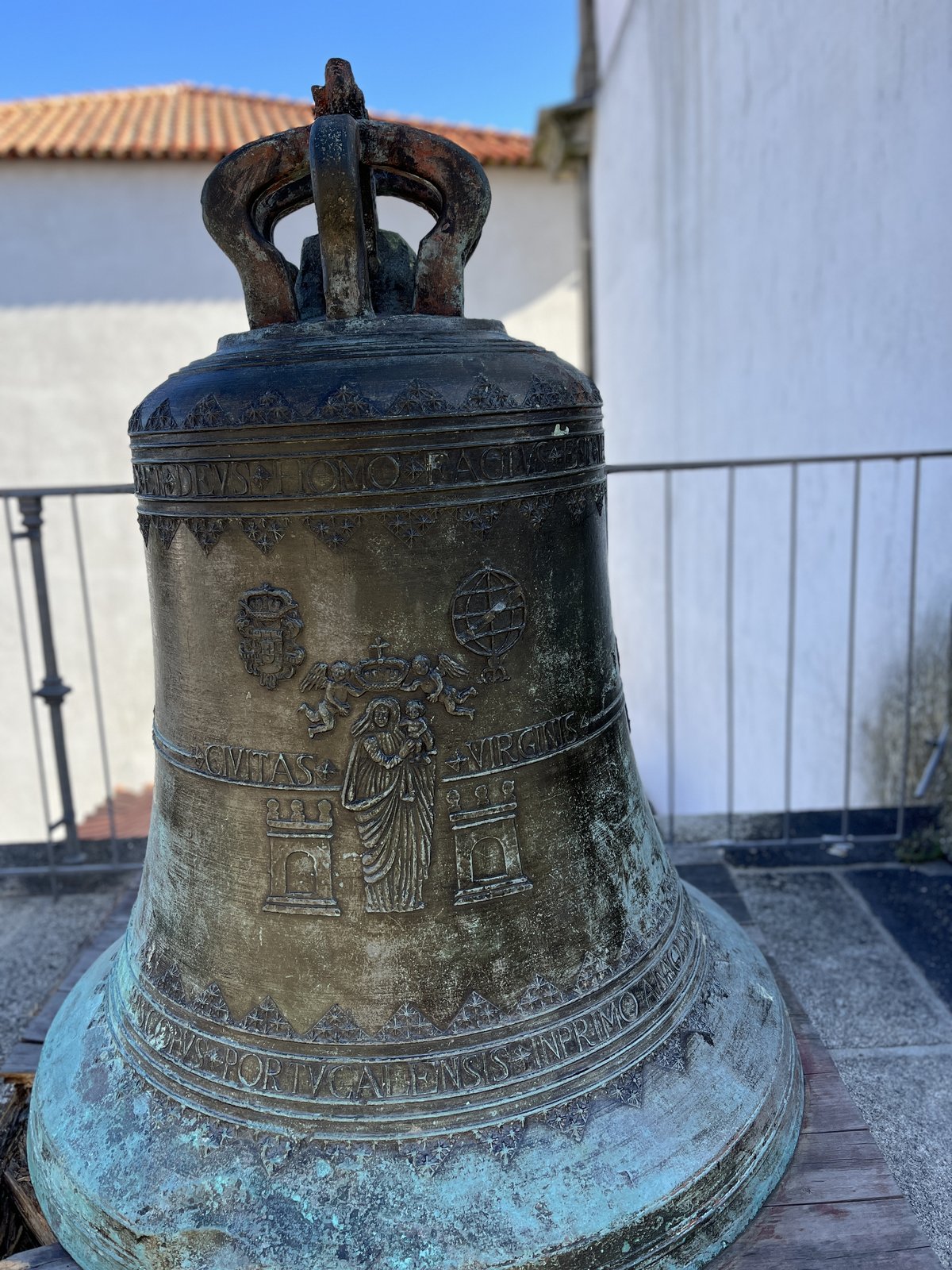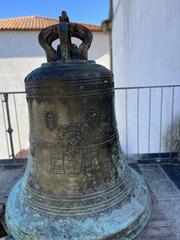
Porto Cathedral Visiting Hours, Tickets, and Guide to Porto Historical Sites
Date: 14/06/2025
Introduction
Porto Cathedral (Sé do Porto) stands as a defining symbol of Porto, Portugal, blending centuries of religious, cultural, and architectural heritage. Perched atop the city’s highest hill in the historic Batalha district, the cathedral invites visitors to step into Portugal’s medieval Christian past while enjoying breathtaking views over the city, the Douro River, and the Dom Luís I Bridge. This guide provides comprehensive details on Porto Cathedral’s visiting hours, ticketing options, architectural highlights, and practical visitor advice, ensuring you make the most of your experience in Porto (visitportugal.com; madaboutporto.com; thecollector.com; porto-tourism.com).
Table of Contents
- Introduction
- Historical Overview
- Cultural and Religious Significance
- Notable Historical Events
- Visitor Information
- Key Architectural Features
- Frequently Asked Questions (FAQ)
- Conclusion
- Call to Action
- References
Historical Overview
Origins and Early Construction
Porto Cathedral traces its origins to the early 12th century, a pivotal era in northern Portugal marked by the consolidation of Christian rule. Bishop D. Hugo initiated construction, choosing a prominent site in the Batalha district, then enclosed by medieval walls—a testament to the cathedral’s dual function as both a place of worship and a defensive stronghold (visitportugal.com; madaboutporto.com). The Romanesque style dominates the earliest sections, visible in the fortress-like façade, thick granite walls, rounded arches, and the original rose window. Construction continued into the 13th century, solidifying the cathedral’s role as both a religious and civic centerpiece (thecollector.com).
Architectural Evolution
Over the centuries, Porto Cathedral evolved through several architectural phases, reflecting the city’s historical and artistic development (porto-tourism.com).
- Gothic Additions (14th–15th centuries): The addition of the Gothic cloister with its pointed arches and ribbed vaults marked a significant expansion. The cloister’s walls later gained azulejo tile panels depicting scenes from the Song of Solomon. The period also introduced funerary chapels with Gothic vaulting.
- Baroque Transformations (17th–18th centuries): Architect Nicolau Nasoni led dramatic Baroque renovations, including a new loggia, ornate chapels, and the north façade. The Chapel of the Holy Sacrament boasts a silver altarpiece—a Baroque masterpiece (madaboutporto.com; thecollector.com).
Despite these changes, Romanesque, Gothic, and Baroque elements coexist harmoniously, creating a layered architectural narrative unique to Porto.
Cultural and Religious Significance
Porto Cathedral has long served as the spiritual heart of the city, dedicated to several Marian titles, including Nossa Senhora da Vandoma, Porto’s patroness (visitportugal.com). The cathedral’s chapels, processions, and religious events anchor Porto’s Catholic traditions. Its elevated location and central role in civic life made it the site of royal weddings, baptisms (including that of Prince Henry the Navigator), and other significant ceremonies, reinforcing its importance in the nation’s history (madaboutporto.com; thecollector.com).
Notable Historical Events
- 1387: The royal wedding of King João I and Philippa of Lancaster, strengthening the Anglo-Portuguese Alliance.
- Prince Henry the Navigator’s Baptism: Linking the cathedral to Portugal’s Age of Discoveries.
- 1801 War of the Oranges: Temporary occupation by Spanish forces, commemorated by a marble plaque (madaboutporto.com).
Visitor Information
Visiting Hours
- Cathedral (Main Church):
- April to October: 09:00–18:30
- November to March: 09:00–17:30
- Closed on Christmas Day and Easter (Introducing Porto; Tiqets).
- Cloister and Treasury: Same hours as the main church. Last admission is typically 30 minutes before closing.
Tickets and Guided Tours
- Cathedral Entry: Free
- Cloister and Treasury: €3 (children under 10 free; discounts for seniors, students, and residents may apply) (Fernando Lopes).
- Where to Buy: On-site or online for faster entry (Tiqets).
- Guided Tours: Available in multiple languages. Advance booking is recommended, especially for groups (Tiqets).
Accessibility
- Main Nave: Wheelchair accessible; entrance ramps available.
- Cloister and Upper Levels: Steps and uneven surfaces may restrict access for wheelchair users; there are no lifts.
- Facilities: Restrooms (basic), gift shop, brochures, and information desks (Klook).
Photography Tips
Photography is permitted in most areas, but flash and tripods are generally prohibited to protect artworks. Check signage or ask staff before photographing chapels or religious objects.
Nearby Attractions
- Episcopal Palace: Adjacent, with lavish interiors and historical exhibitions (Portugal Tips).
- Ribeira District: UNESCO World Heritage riverside area.
- Dom Luís I Bridge: Iconic double-deck iron bridge.
- São Bento Station: Renowned for its azulejo tile panels.
- Clérigos Tower: Offers panoramic city views (Klook).
Key Architectural Features
- Romanesque Exterior: Towering granite walls, twin square towers, and a 12th-century rose window (madaboutporto.com).
- Gothic Cloister: 14th-century pointed arches and ribbed vaults, with 18th-century azulejo tiles (porto-tourism.com).
- Baroque Loggia and Altarpieces: Designed by Nicolau Nasoni, including the silver altarpiece in the Chapel of the Holy Sacrament (thecollector.com).
- Three-Nave Layout: Supported by pointed arches and ribbed vaults; monumental marble holy water fonts.
- Decorative Details: Mannerist chancel, granite engravings, stained glass windows, and a 13th-century depiction of a “coca” boat (madaboutporto.com).
Frequently Asked Questions (FAQ)
Q: What are Porto Cathedral’s visiting hours?
A: April–October: 09:00–18:30; November–March: 09:00–17:30. Closed on Christmas Day and Easter.
Q: Is there an entrance fee?
A: Entry to the cathedral is free. The cloister and treasury cost €3 (children under 10 free).
Q: Are guided tours available?
A: Yes, in multiple languages. Advance booking is recommended.
Q: Is Porto Cathedral accessible for wheelchair users?
A: The main nave is accessible, but some historic areas (cloister, upper floors) have steps and uneven surfaces.
Q: Can I buy tickets online?
A: Yes, tickets for the cloister and treasury are available online, including combination tickets with other attractions (Tiqets).
Q: Can I take photos inside the cathedral?
A: Yes, but no flash or tripods. Follow posted guidelines.
Conclusion
Porto Cathedral is a living testament to Portugal’s spiritual, cultural, and architectural heritage. Its Romanesque, Gothic, and Baroque features tell a story of resilience and transformation, while its panoramic views and central location make it unmissable for any visitor. Whether you’re passionate about history, architecture, or simply wish to experience Porto’s vibrant atmosphere, a visit to the cathedral offers a profound and memorable encounter with the city’s past and present.
Call to Action
Ready to explore Porto Cathedral and the city’s historical treasures? Download the Audiala mobile app for guided tours, insider tips, and real-time updates. Explore our related articles on Porto’s historic gems, and follow us on social media for the latest travel inspiration!
References
- Porto Cathedral: Visiting Hours, Tickets, and Historical Highlights of Porto’s Iconic Monument (visitportugal.com)
- Porto Cathedral Information (madaboutporto.com)
- Porto History and Historic Sites (thecollector.com)
- Religious Edifices in Porto: Porto Cathedral (porto-tourism.com)
- Porto Cathedral Visiting Guide (Cooltour Oporto)
- Porto Cathedral History, Facts and Services (Adequate Travel)
- Porto Cathedral Visiting Hours and Tickets (Introducing Porto)
- Porto Cathedral Visitor Information (Klook)
- Porto Cathedral Tickets on Tiqets (Tiqets)
- Porto Cathedral Visitor Tips (ZigZag On Earth)
- Porto Cathedral Visiting Hours (Fernando Lopes)
- Porto Cathedral Itinerary (Portugal Tips)
- Explore Porto Cathedral (Canto do Luz)
- Porto Cathedral on Trip.com (Trip.com)







































